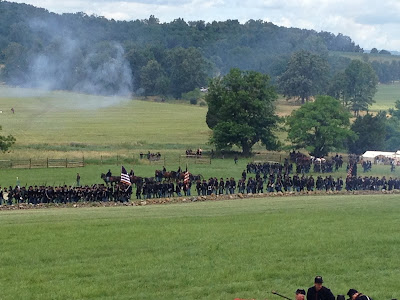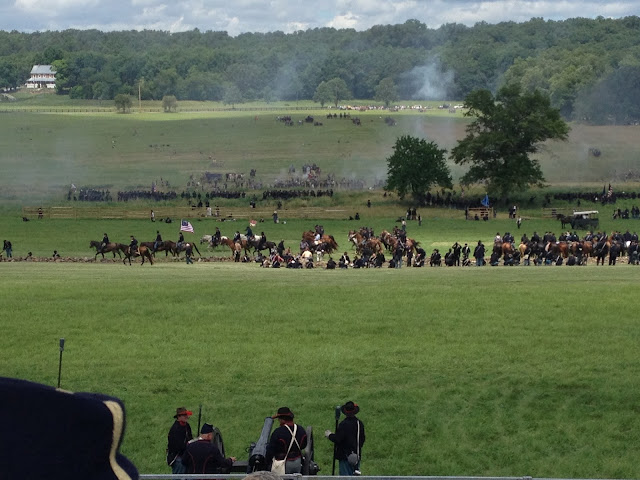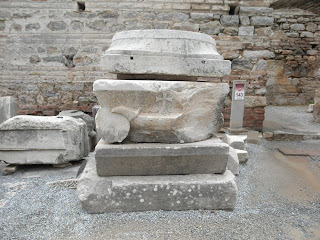As a historian, I enjoy watching stuff like Ancient Aliens. Because it is totally not true but entertaining. 'Theories' about E.T.s coming to our world to create our civilization sort of fill the gap in our knowledge of our own past, and we can fill this void anyway you like.
Well, so long as you are writing fantasy fiction. Stargate SG1 was fun, too. This show was successful, because the story in the end tells us that we are here because we deserve to be here: all those technologically advanced aliens were either too arrogant or evil or stupid and ended up destroying themselves. We humans, on the other hand, with our spirit for self advancement, will rightly inherit the best part of ancient civilizations and will achieve a lot in future. Very uplifting and American. Good for your morale.
But if these bunch of amateur theorists claim that aliens created humanity in the ancient past? Well, evidence they cite is weaker than evidence for existence of angels and demons.
What is most annoying is that they say the ancient aliens ideas are 'theories'. Erich von Daniken, the guy who started it all, repeatedly says, he's merely asking questions: 'Isn't it just possible ... ?' and he goes on complaining that his critics attack him for coming up with his fantastic theory without credible evidence just to sell books.
A few minutes later, he shows some ancient wall carving, practically shouting, this is evidence that aliens landed on earth. I would say Daniken's critics are right: he is not merely asking questions, he's trying to force you to accept an idea backed by the most flimsy evidence.
For instance, we are repeatedly shown this archaeological find at Palenque from Maya civilization.
Apparently, this stone carving depicts an ancient nobleman who was also an astronaut sitting in the middle of some sort of mechanical craft. They say this guy looks like modern astronauts and that this is an ancient space craft, with the cockpit part exaggerated for artistic reason and belching fire at the bottom. If this thing also looks like some sort of mythical tree, that's because an artist or artists didn't understand what they were looking at. Hence the idea of aliens visiting Earth, as the ancient Mayans did not quite understand alien technology.
(Perhaps like this?)
They maintain that the ruling elite of Maya were a either liens or people who were educated by aliens. Maya civilization collapsed in the medieval period - that this advanced civilization didn't fall: the Mayans left Earth either to return to their home world or to colonise another planet.
When I was a kid, though I loved watching stuff like that on TV, naturally I was baffled by this explanation. For one thing, if ancient aliens were so advanced to travel for hundreds of light years to come to earth, surely, they used more advanced technology than primitive rocket from the 1960s? Belching fire? Aren't they supposed to fly flying saucers or something? I thought they would be using anti-gravity or technology we cannot even imagine to power such craft. How come their astronauts were confined in a small cockpit when traveling for many months or even years? Where's the loo?
Indeed, when we imagine future technology for long distance space travel, this is how we picture it.
So, perhaps, ancient statues like this is better evidence to support the idea that we had space technology in the past or that aliens came to earth.
Or, maybe Abraham Lincoln wasn't assassinated but he flew off in his spaceship!
History is full of gaps. When we say 'history', we are talking about recorded history. Unless it gets written down, no matter how significant, what happened in the past wd not constitute our history. We historians are trained to decipher official documents and other written records to construct a seamless narrative to give people 'a story of us'. Unfortunately, there are so many things in this world that defiy historians' effort to explain everything.
There are many gaps in our knowledge of the past simply because our written records are not complete. Some cultures were illiterate. Something happens, but no one bothered to write about it. Wars and natural disasters destroyed written records. There are many reasons for blank pages in our history books.
Also, our history is naturally selective, as most historical narratives we consume are often written for political and moral purposes. Simply put, a history is about explaining how a certain group of people, i.e., a nation or an ethnic group, has formed and why you are part of it and why we should obey certain rules in our society. Inevitably, such history includes only information which is relevant to the theme.
The Bible, for instance, talks about how a Jewish nation was formed during the first millennium BC. So, while we know that the Jews were once in Egypt, the Bible isn't very helpful about Egyptian history, as it was not the purpose of the book.
What you can read in the Bible is political ideology at the height of the ancient Israelite kingdom: the book is not even intended to give factual accounts of history in the region since the creation of the world. Yet, the ancient Jews, by saying we were delivered from the tyrannical and evil Egyptians by the power of God, tried to make a point about their independent existence, free of interference from great powers of the day, such as Egypt. Sitting in the crossroad between great powers in Egypt, Mesopotamia and Asia Minor, developing such ideology must have been crucial for survival of a middle sized kingdom.
When Jews were helped by God, they won. Since, this God was supposed to be powerful enough to beat military might of the great powers, His image must be something more assuring and powerful than just a statue of a winged half-man, half-animal. Hence the weird imagery described in the Book of Ezekiel, perhaps? This God is something beyond natural laws and human perceptivity. Surely, such a God must be so powerful, He can help a small nation to survive among big bullies. Yet, when the Israelites refused to worship this God properly, they were enslaved by the Babylonians, the big bully of the time.
What I want to say is that before jumping on to the alien theories, we must exhaust all other possibilities. Aren't there more mundane and simpler explanations? Simply because ancient historical writing does not follow modern styles of history writing, we should not bring in aliens so easily.
The real mystery to me is this though: if the above is my view, why do I keep watching History Channel?





































